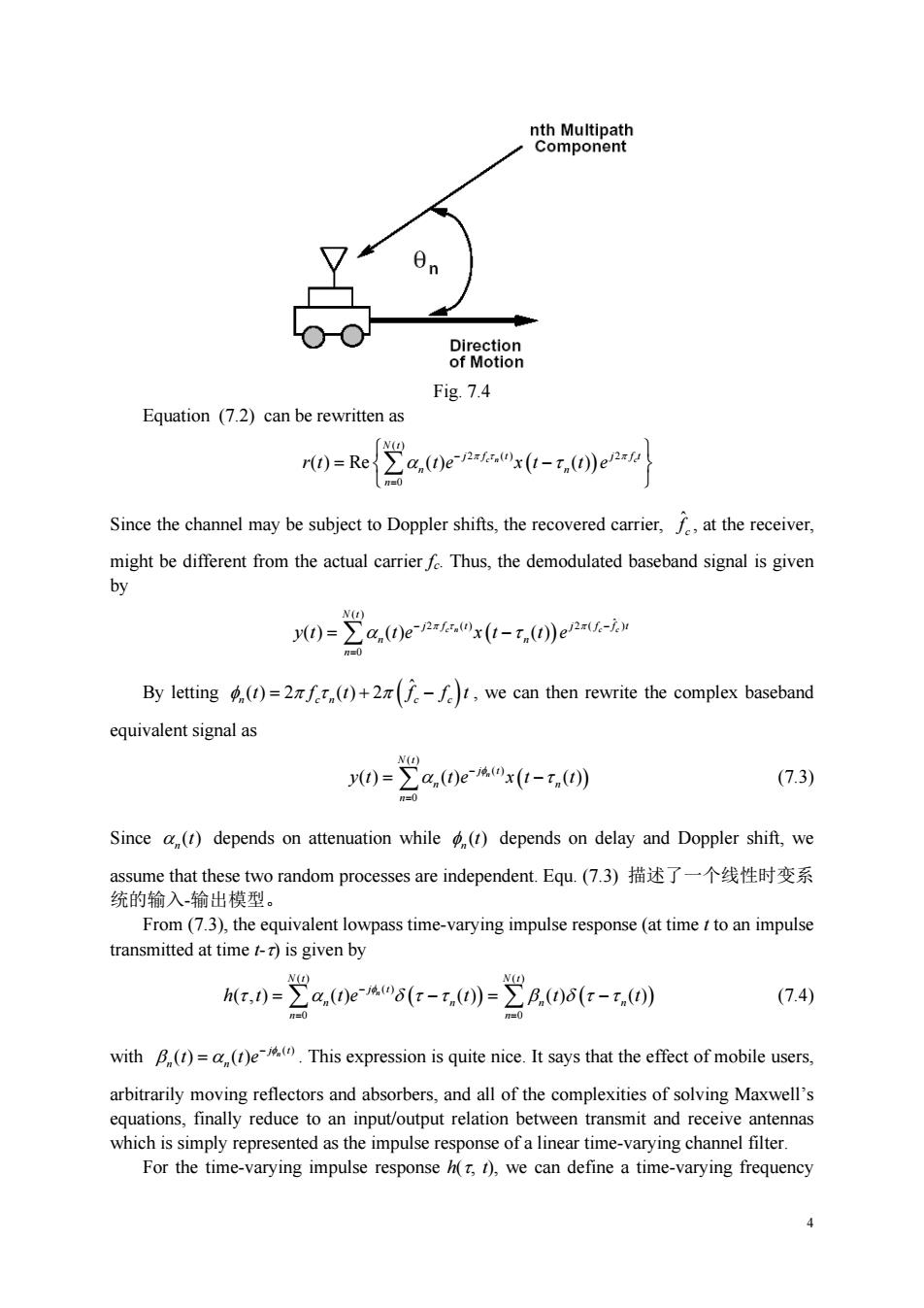正在加载图片...

ncoMpgoHeat Fig.7.4 Equation(7.2)can be rewritten as ro-Rea.0-. Since the channel may be subject to Doppler shifts,the recovered carrier,f at the receiver, might be different from the actual carrier Thus,the demodulated baseband signal is given by 0=∑a.0e2.ox-r.0)e2-d By letting()=()+,we can then rewrite the complex baseband equivalent signal as 0-2a0et-0叭 (7.3) Since a()depends on attenuation while()depends on delay and Doppler shift,we assume that these two random processes are independent.Equ.(7.3)描述了一个线性时变系 统的输入输出模型。 From(7.3),the equivalent lowpass time-varying impulse response(at timeto an impulse hc0-2a0ewar-0)-2A06(r-r0) (7.4) with B()(e This expression is quite nice.It says that the effect of mobile users. arbitrarily moving reflectors and absorbers,and all of the complexities of solving Maxwell's equations,finally reduce to an input/output relation between transmit and receive antennas which is simply represented as the impulse response of a linear time-varying channel filter. For the time-varying impulse responseh(),we can define a time-varying frequency4 Fig. 7.4 Equation (7.2) can be rewritten as ( ) 2 () 2 0 ( ) Re ( ) ( ) cn c N t j f t j ft n n n rt te x t t e Since the channel may be subject to Doppler shifts, the recovered carrier, ˆ c f , at the receiver, might be different from the actual carrier fc. Thus, the demodulated baseband signal is given by ( ) ˆ 2 () 2 ( ) 0 () () () cn c c N t j f t j f ft n n n yt te xt t e By letting ˆ () 2 () 2 n cn c c t f t f ft , we can then rewrite the complex baseband equivalent signal as ( ) ( ) 0 () () () n N t j t n n n y t te xt t (7.3) Since ( ) n t depends on attenuation while ( ) n t depends on delay and Doppler shift, we assume that these two random processes are independent. Equ. (7.3) 描述了一个线性时变系 统的输入-输出模型。 From (7.3), the equivalent lowpass time-varying impulse response (at time t to an impulse transmitted at time t-) is given by () () ( ) 0 0 ( ,) () () () () n Nt Nt j t n n nn n n h t te t t t (7.4) with ( ) () () n j t n n t te . This expression is quite nice. It says that the effect of mobile users, arbitrarily moving reflectors and absorbers, and all of the complexities of solving Maxwell’s equations, finally reduce to an input/output relation between transmit and receive antennas which is simply represented as the impulse response of a linear time-varying channel filter. For the time-varying impulse response h(, t), we can define a time-varying frequency